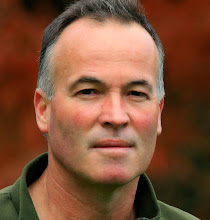 |
| Photo - Katie Earnshaw |
It is not unusual to have a police presence at 1080 poison drops in New Zealand. People have been voicing their concerns about the use of aerially applied 1080 poison for many years. Their concerns have been mostly ignored. As a result, protesting has become a more regular occurrence.
On the 15th of June, 2010, 6 protestors - Daniel Hunt, Phillip Patterson, Fritz Felling, John Lewis, Amy C****, and Steven Hoy - were arrested and charged under the Biosecurity Act for obstructing a 1080 poison operation. Daniel Hunt was also charged under the Civil Aviation Act. Two others, photographer Katie Earnshaw, and Daniel Dick, were reportedly part of the protest group, but not charged.
On the day of the protests spokesperson for the group - Peter Salter - summed up the situation by stating "if arrested, they're being arrested for a good cause!"
 |
| Photo - Katie Earnshaw |
On November 4, 2011, Judge P R Kellar ordered the charges against Daniel Hunt, John Lewis and Steven Hoy, be dismissed. The defendants were dismissed without conviction.
Two other protestors arrested and charged at the same poison operation, have elected to be heard by jury. Their court case is still pending. Amy C**** was granted diversion.
This result by Judge Kellar is a significant victory for all those people who have stood up for an issue that is in need of urgent attention. 1080 poison is killing off New Zealand ecosystems (plenty of evidence included on this blog, alone), and putting endangered species at risk of extinction. Localised species extinction is already evident in some regions that have had intensive poisoning.
 |
| Photo - Katie Earnshaw |
The dust generated from the poison operations is known to travel at least 500 metres from drop-zone boundaries.
Poison signs are placed at all access points into national parks, tracks, road entrances, and camp grounds. 1080 poison is aerially distributed in 2 forms of food - cereal pellets and carrot pieces, and is attractive not only to the target species - rats and possums - but to many other forest dwelling wildlife.
Here, carrot pieces are being prepared for aerial distribution across the Kahurangi National Park.
1080 poison is a cruel killer. It kills not only native wildlife, but other forest animals as well. The poison is retained in the carcasses of its victims, and once eaten, can then kill the next feeder up the food-chain. 1080 poison is also an insecticide, often killing insectivorous birds after they've eaten insects that have consumed the poison. Pets, livestock and other non-target species are often victims. It is estimated by scientists that approximately 20,000 deer are killed in 1080 poison drops, every year! To watch a documentary on the use of 1080 poison in New Zealand, please click here. Poisoning Paradise













No comments:
Post a Comment